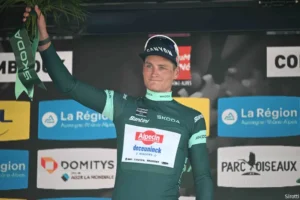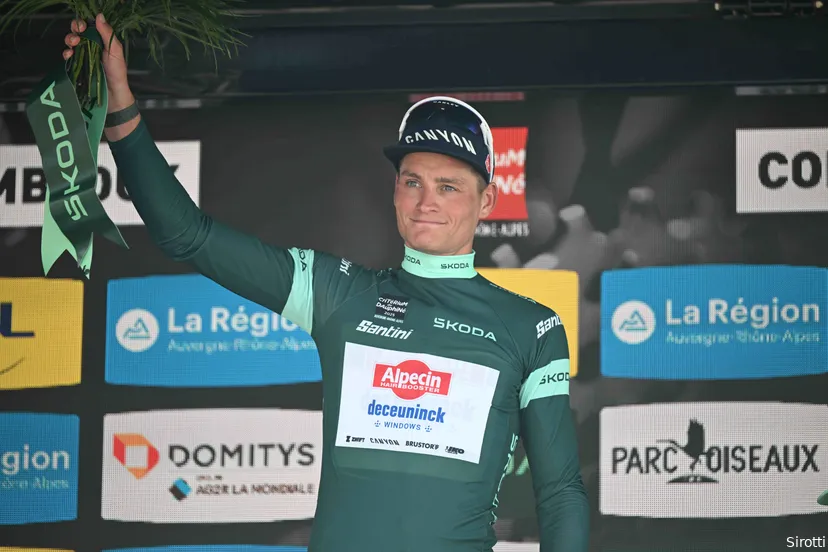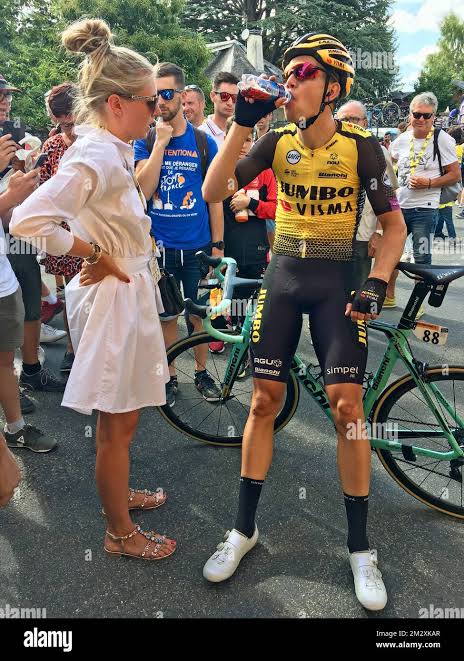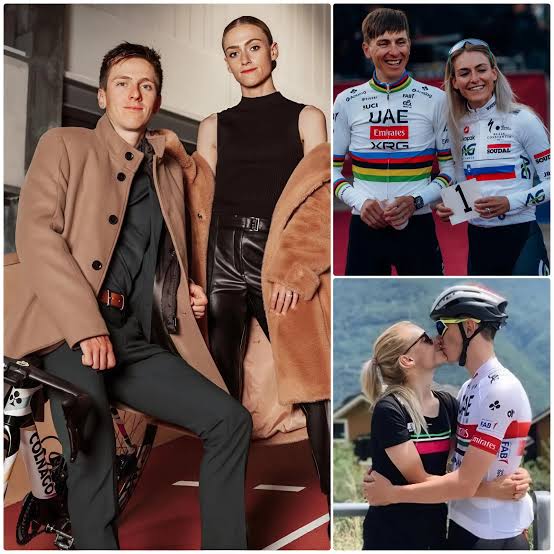**Zonneveld Believes Van der Poel Will Target the Green Jersey in the Tour de France, Thanks to Van Aert: “That Really Challenges Mathieu”**
The 2025 Tour de France promises to be one of the most unpredictable and exciting editions in recent memory, not only because of the formidable mountain stages and strategic battles for the yellow jersey but also due to the intense competition for the green jersey—the coveted points classification. Among the contenders, Mathieu van der Poel (Alpecin-Fenix) is increasingly seen as a genuine challenger, especially with the support and rivalry of Wout van Aert (Jumbo-Visma).
**The Green Jersey as the New Battleground**
Traditionally, the Tour’s spotlight has been on the yellow jersey, awarded to the overall race leader based on cumulative time. However, in recent years, the points classification—symbolized by the green jersey—has gained prominence, often becoming a spectacle in its own right. The battle for the green jersey involves sprinters, Classics specialists, and all-rounders who can accumulate points across various terrains and stages.

Mathieu van der Poel, renowned for his versatility and explosive power, has expressed a strategic shift this year. Thanks to a carefully curated route and his own evolution as a rider, the Dutchman is eyeing the green jersey not merely as a secondary goal but as a primary objective. The route’s characteristics, including favorable flat stages and intermediate sprint opportunities, play directly into his strengths.
**Thijs Zonneveld’s Expert Perspective**
Cycling analyst Thijs Zonneveld has been closely following the developments leading up to the Tour. He believes that Van der Poel’s ambitions for the green jersey are more than just wishful thinking. Zonneveld emphasizes that Van der Poel’s current form and the route’s profile make this a genuine possibility.
However, Zonneveld also offers a critical perspective, particularly towards the Tour organizers. He suggests that the route’s design, while favorable for certain riders, may favor specific teams and riders over others, possibly skewing the competitive landscape. He hints that the race’s organization might be overly influenced by commercial interests or traditional route structures that don’t necessarily maximize rider diversity or challenge.
**The Route’s Role in Van der Poel’s Strategy**
The first ten stages of this year’s Tour are especially pivotal. They include a variety of terrain, with a notable inclusion of a time trial—a discipline where Van der Poel has shown impressive prowess in recent months.
At the Critérium du Dauphiné, Van der Poel delivered a stunning performance in the individual time trial, further cementing his reputation as a versatile rider capable of excelling across disciplines. His structured approach to the season marks a departure from previous years, when the Tour was often considered a secondary priority or even a reluctant participation for him.
Instead, Van der Poel has tailored his season to peak at the Tour, with a focus on both stage wins and the points classification. His improved time-trialling ability is crucial, especially as the race approaches stages with flat profiles and time trial segments. Zonneveld notes that Van der Poel’s good performance at Dauphiné was no coincidence; it was a direct result of his targeted preparation for this Tour route.
**The Role of Van Aert in the Battle for Green**
A central figure in the green jersey contest is Wout van Aert. The Belgian star, also riding for Jumbo-Visma, has historically been a versatile threat—capable of sprinting, climbing, and time-trialling. His presence complicates Van der Poel’s green jersey ambitions, as Van Aert is also a formidable contender, especially in stages suited to his skill set.
Zonneveld points out that Van Aert’s versatility is both a challenge and an opportunity for Van der Poel. If Van Aert focuses on the points race, it could push Van der Poel to elevate his effort. Conversely, Van Aert’s strategic choices might help shape the overall dynamics of the green jersey battle, potentially allowing Van der Poel to seize opportunities by staying close in the standings and capitalizing on intermediate sprints.
**Why the Green Jersey Could Steal the Show**
The excitement around the green jersey stems from several factors:
– **Route Favorability:** The route’s design favors riders like Van der Poel who can contest sprints and intermediate points, especially if the stages are not overly mountainous or if the mountain stages are not too selective.
– **Stage Opportunities:** Flat and rolling stages, along with intermediate sprints, are plentiful in the early and middle parts of the Tour. Van der Poel’s ability to contest these points makes him a serious contender.
– **Time Trial Impact:** A strong individual time trial performance could give Van der Poel a significant advantage, allowing him to gain time on rivals and potentially take the lead in the classification.
– **Rider Motivation:** Both Van der Poel and Van Aert are highly motivated and capable of aggressive racing, which could lead to tactical battles that are as thrilling as the overall yellow jersey contest.
**Potential Challenges and Critical Views**
Despite these optimistic prospects, Zonneveld raises some critical points. He suggests that the route, while favorable to certain riders, may be somewhat predictable, potentially leading to a less dynamic race for the green jersey. He also points out that team strategies, rider fatigue, and tactical decisions will heavily influence the final outcome.
Furthermore, the dominance of teams like Jumbo-Visma, with their strong roster, could influence the race’s dynamics, possibly leading to controlled sprints or strategic breakaways designed to protect their leaders or challenge rivals.
**The Broader Implication for the Tour de France**
The focus on the green jersey reflects a broader shift in the Tour de France’s narrative. While the yellow jersey remains the ultimate symbol of victory, the points classification has become an equally compelling storyline, especially with riders like Van der Poel and Van Aert pushing each other to new heights.
This rivalry exemplifies the modern Tour—more than just a race for the overall victory, it’s a multi-layered competition with several battles unfolding simultaneously. For fans, this means more opportunities for surprise, excitement, and strategic intrigue.
Thijs Zonneveld’s insights underscore that this year’s Tour de France could see a historic clash for the green jersey, driven by the ambitions of Mathieu van der Poel and Wout van Aert. Thanks to a route that plays to their strengths, their exceptional form, and their teams’ strategic support, the points classification might outshine the yellow jersey contest in terms of spectacle.
While some critics may question the race’s route design or predict a predictable outcome, the combination of rider talent, tactical battles, and stage opportunities makes the green jersey fight one of the most exciting aspects of this Tour. As Van der Poel aims to add another prestigious jersey to his collection, the battle for green promises to be a defining feature of the 2023 edition—one that cycling fans will remember for years to come.



